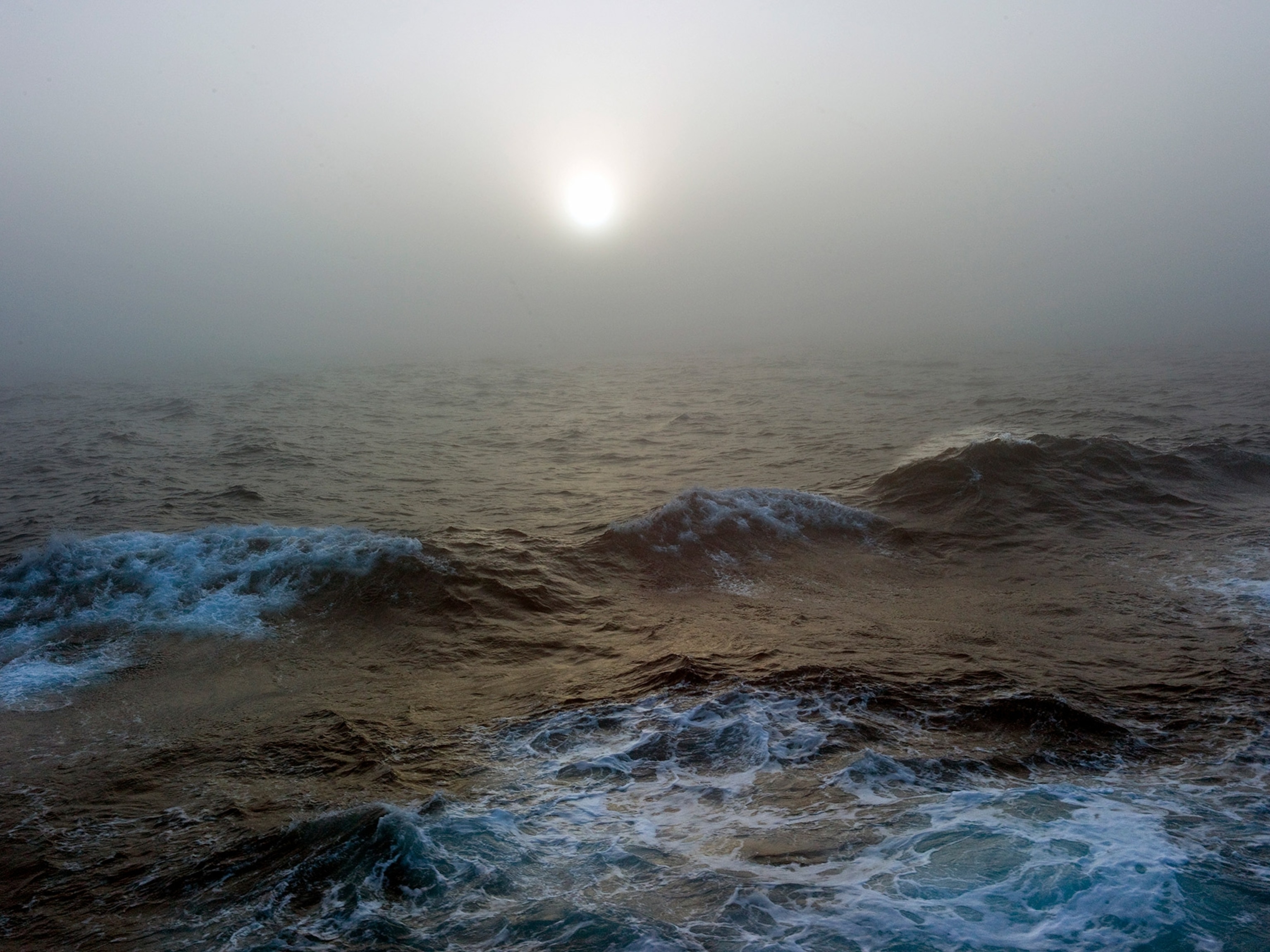
Mammoth-Belch Deficit Caused Prehistoric Cooling?
By killing Ice Age mammals, humans cut greenhouse gas emissions, study says.
When mammoths and other Ice Age "megafauna" disappeared from the Americas about 12,800 years ago, the animals took with them their planet-warming burps—spurring the mysterious cooling period known as the Younger Dryas, a new study says.
And because humans are thought to have killed the creatures off, the deaths hint that we've been changing the climate since long before the first Model T chugged out of Mr. Ford's factory.
According to ice core studies, the Younger Dryas event began about a thousand years after mass human migrations into the Americas 13,400 years ago, near the end of the last ice age.
The world had been starting to warm, but the Younger Dryas brought on a freeze that lasted roughly 1,300 years, with estimated temperature drops of 7.2 to 14.4°F (4 to 8°C) in eastern North America and northern Europe.
Also within a thousand years of the human migrations, more than 114 species of large plant-eaters—including woolly mammoths, giant camels, and ground sloths—had gone extinct. (See pictures of a stunningly preserved baby mammoth.)
The link between the extinctions and cooling, the study says, is methane, a greenhouse gas 20 times more powerful than carbon dioxide when it comes to global warming.
As they digest plant material, large herbivores give off the gas, which, contrary to popular belief, escapes via the head.
"People just automatically assume that it's farts," lamented study leader Felisa Smith of the University of New Mexico. "Eighty to 90 percent of methane ... is in the form of a burp."
(Related: "California Cows Fail Latest Emissions Test.")
Missing Methane Mystery Solved?
At the onset of the Younger Dryas, atmospheric methane concentrations dropped two to four times faster than at any other period in Earth's history, according to the report.
The cause, Smith said, is all those missing methane burps. "We estimate that just under ten teragrams [about ten million tons] of methane would have gone missing when these animals went extinct," she said.
(Related: "Ice Age Horses May Have Been Killed Off by Humans, Study Finds.")
And because Ice Age atmospheric methane concentrations were about a third of what they are now, the missing emissions had an outsize impact—accounting for at least 12 to 15 percent of the methane reduction, she said. "And it could be as much as 100 percent."
(See "Next Ice Age Delayed by Global Warming, Study Says.")
Epochal Event
Traditionally geologists have said humans are now living in the Holocene epoch, which began 11,500 years ago.
Smith and her team are among scientists who argue that Earth has entered a new age, characterized by widespread, human-wrought change: the Anthropocene, or "new man," epoch.
The proposed epoch is often said to have started with the industrial revolution, some two centuries ago.
But, assuming humans were responsible for the Ice Age die-offs, the advent of the Anthropocene should be pushed back to 13,400 years ago, into the Ice Age, the study authors say.
(Also see "Climate Change, Then Humans, Drove Mammoths Extinct.")
"Any way you spin it," Smith said, "humans had a discernable effect on the environment prior to the beginning of the Holocene."
Findings published in the journal Nature Geoscience on May 23.
You May Also Like
Go Further
Animals
- Behind the scenes at America’s biggest birding festivalBehind the scenes at America’s biggest birding festival
- How scientists are piecing together a sperm whale ‘alphabet’How scientists are piecing together a sperm whale ‘alphabet’
- Orangutan seen using plants to heal wound for first timeOrangutan seen using plants to heal wound for first time
- What La Palma's 'lava tubes' tell us about life on other planetsWhat La Palma's 'lava tubes' tell us about life on other planets
Environment
- The northernmost flower living at the top of the worldThe northernmost flower living at the top of the world
- This beautiful floating flower is wreaking havoc on NigeriaThis beautiful floating flower is wreaking havoc on Nigeria
- What the Aral Sea might teach us about life after disasterWhat the Aral Sea might teach us about life after disaster
- What La Palma's 'lava tubes' tell us about life on other planetsWhat La Palma's 'lava tubes' tell us about life on other planets
- How fungi form ‘fairy rings’ and inspire superstitionsHow fungi form ‘fairy rings’ and inspire superstitions
History & Culture
- This thriving society vanished into thin air. What happened?This thriving society vanished into thin air. What happened?
- These were the real rules of courtship in the ‘Bridgerton’ eraThese were the real rules of courtship in the ‘Bridgerton’ era
- A short history of the Met Gala and its iconic looksA short history of the Met Gala and its iconic looks
Science
- Why trigger points cause so much pain—and how you can relieve itWhy trigger points cause so much pain—and how you can relieve it
- Why ovaries are so crucial to women’s health and longevityWhy ovaries are so crucial to women’s health and longevity
Travel
- The key to better mindfulness may be your public gardenThe key to better mindfulness may be your public garden
- How to spend a weekend in Kitzbühel, Austria
- Paid Content
How to spend a weekend in Kitzbühel, Austria - What it's like trekking with the Bedouin on Egypt's Sinai TrailWhat it's like trekking with the Bedouin on Egypt's Sinai Trail




